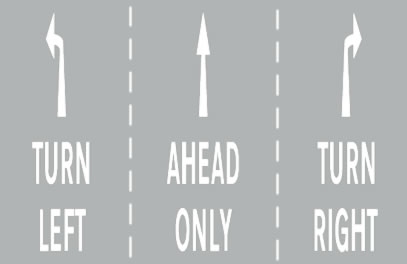One-way systems can present a confusing challenge to not only learner drivers, but experienced drivers alike.
Therefore at 4front Driving School we encourage our students to familiarize themselves with the one way Systems around towns they learn in which in turn will help them to adapt their understanding of how they work with new systems they come across in the future.
They can often involve multiple lanes. During a driving test, the examiner will either tell you which lane they would like you to take, or ask you to ‘follow the signs for’ – leaving it for you to decide which lane is appropriate. Look out for signs, road markings or follow the basic rule left hand lane for left and right hand lane for right. Left hand lane for straight on unless lane markings say otherwise or there are more than 2 lanes.
Many driving tests are failed on one-way systems due to learner drivers using the incorrect lane, realising they are in the incorrect lane and accessing the correct lane unsafely. Driving tests are not failed due to using the incorrect lane providing it is legal and safe. If you find yourself in the wrong lane, try and access the correct lane only if it is safe and legal to do so otherwise take the safest route and tell the examiner you realise your mistake and have made the safest decision.
You will need to use the MSPSL routine and check your blind spot before changing lanes.
Check road markings too. If it is a solid continuous white line then it does not permit you to cross. If you cannot access the correct lane, remain in your current lane and the examiner will take you on an alternative route.
ONE-WAY ROAD MARKINGS
One-way road markings are often placed on one-way roads and systems, especially those with high traffic. They are used as another visual aid alongside signs. Get in lane in good time as leaving it too late may prevent you from gaining access to the correct lane.

